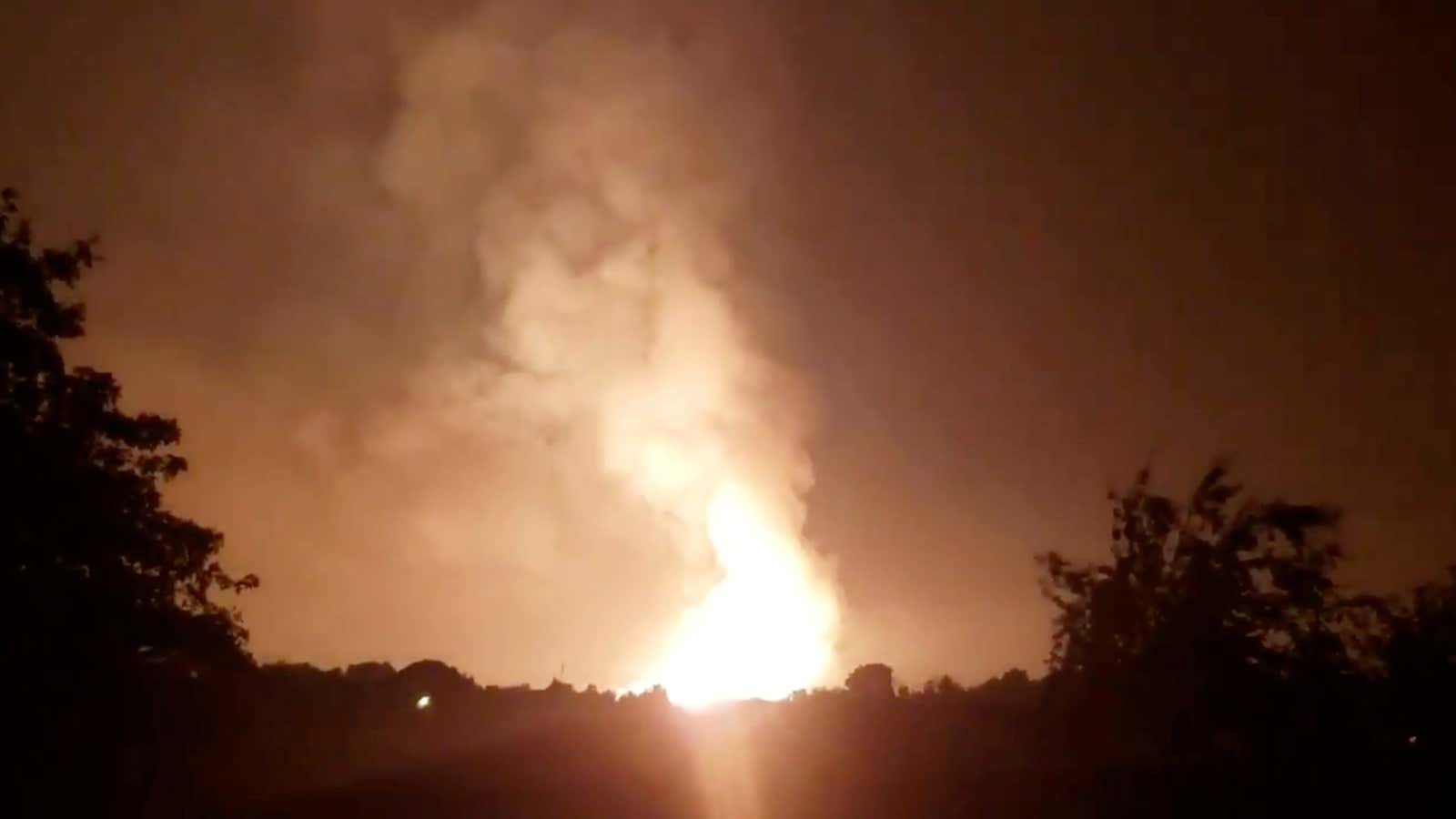A gas pipeline explosion in rural Kentucky early Thursday killed one person and sent five others to the hospital. The blaze also set homes on fire and destroyed railroad tracks.
The pipeline is owned by Enbridge, a Canadian multinational company whose fuel networks crisscross all over the United States and Canada. This particular line was part of Enbridge’s Texas Eastern system, a network that carries natural gas south from the Marcellus and Utica shale of Pennsylvania, Ohio, and West Virginia to refineries in the Gulf Coast.
The explosion in Kentucky is not the first Enbridge incident this year. In January, an Enbridge natural gas pipeline on the same system exploded in Ohio, igniting a fireball that injured two people and damaged homes. In November 2018, a ruptured Enbridge natural gas pipeline ignited a fire that evacuated part of a First Nations territory in British Columbia, Canada.
But Enbridge also moves liquid fuel, and has been behind some of the biggest pipeline accidents in US history, including the catastrophic Kalamazoo River spill. In 2010, an Enbridge pipeline burst, spilling roughly 1 million gallons of thick, sticky Alberta tar sands crude oil into the river ecosystem near Kalamazoo, Michigan. Tar sands crude oil is nothing like its conventional crude oil counterpart; it is thicker and heavier, and must be diluted with a cocktail of chemicals that often include benzene and other carcinogens in order to flow through pipelines. That spill took years and more than a billion dollars to clean up, making it the largest and most expensive inland oil spill in US history.
In 2012, an Enbridge line spilled more than 50,000 gallons of crude oil in Wisconsin, which required 17,000 tons of contaminated soil to be removed. The same year, an Enbridge line spilled and more than 58,000 gallons in Alberta, Canada.
A report published by the environmental group Greenpeace found that between 2002 and 2018, Enbridge averaged a rate of one hazardous liquid pipeline accident every 20 days, for a total of 307 spills and 2.8 million gallons released into the environment. Thirty of those incidents reportedly contaminated water resources, including 17 incidents that were reported to contaminate groundwater.
As pipelines move natural gas under high pressure, the main threat posed by a rupture is fire, like the fireball formed early Thursday in Kentucky. The cause of the rupture has not yet been identified, according to an Enbridge spokesperson who spoke to the Louisville Courier Journal.
There are more than 2.7 million miles of pipeline for oil, natural gas, and other chemical transport snaked across the US. The US currently employs roughly one federal pipeline inspector for every 5,000 miles of pipeline.
